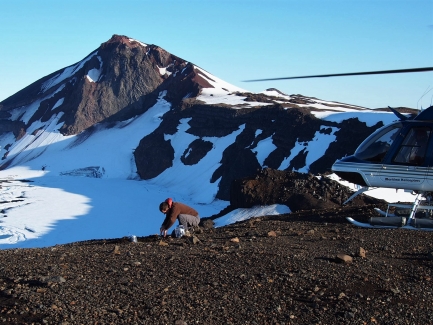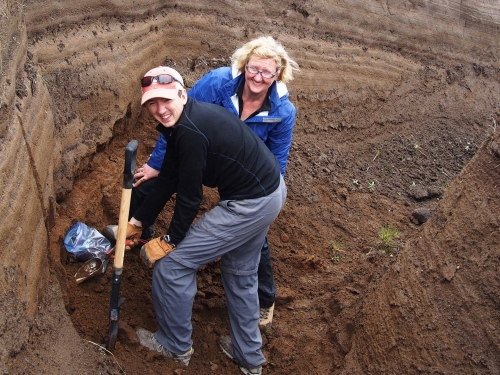
Dan Rasmussen, Peter Buck Fellow at the Smithsonian’s National Museum of Natural History, collects volcanic ash samples from the rim of the summit caldera on Akutan Volcano in 2016. Akutan is one of the most active volcanoes in the Aleutians. A caldera forms when a volcano has a large, explosive eruption. When this happens, the magma body below the volcano that feeds the eruption partially empties, which causes the volcano to collapse. The result is the crater seen in this image. Also visible is the helicopter that carried scientists to their sampling sites. This was a rare day of clear skies and low winds, which enabled researchers to land on the caldera rim. The rock sample Rasmussen collected helped the research team determine the water contents of Akutan magmas.
A new study, published today, March 10, in the journal Science, finds that, for the world’s most common type of volcano, magma with higher water content tends to be stored deeper in the Earth’s crust. The finding identifies what some scientists expect is the most important factor controlling the depth at which magma is stored and may bring experts one step closer to accurately forecasting volcanic eruptions.
SI-98-2022





